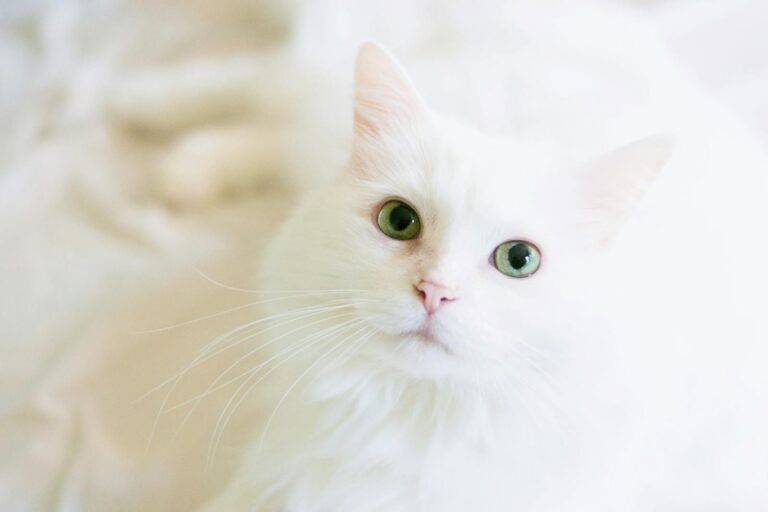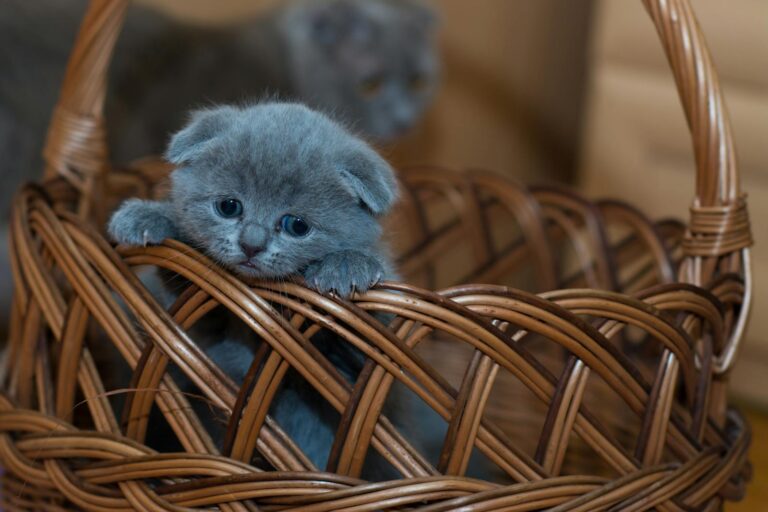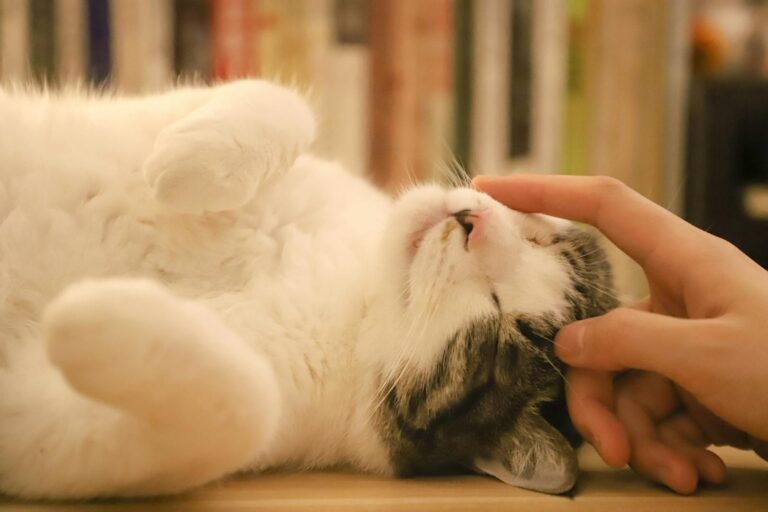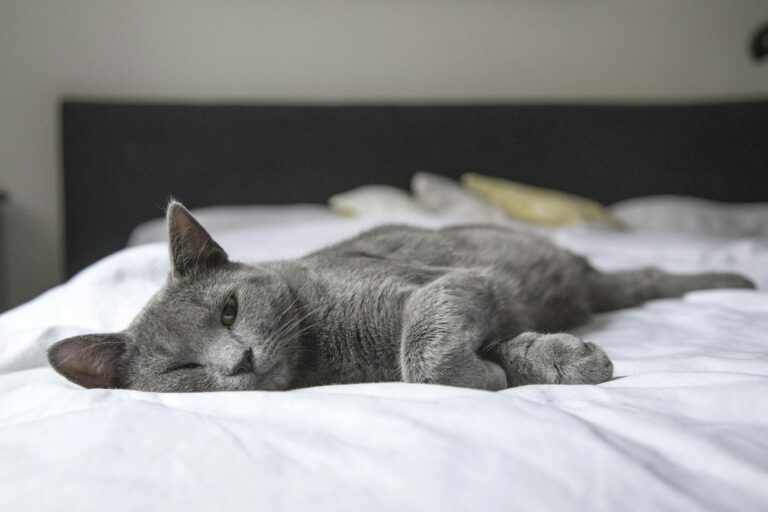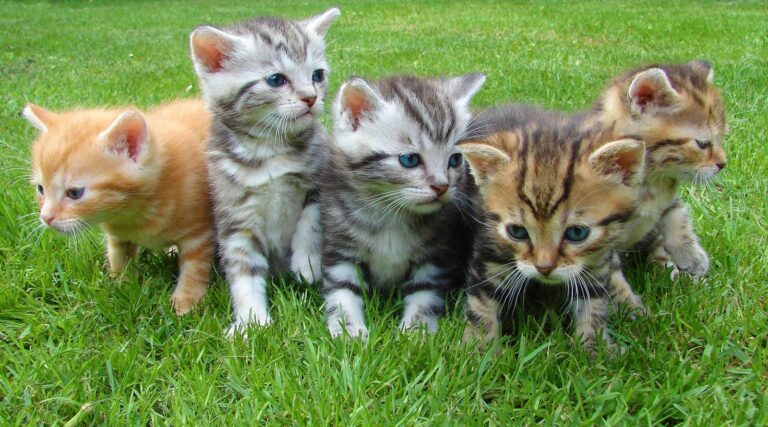Dry vs. Wet Cat Food – Decoding the Best Diet for Your Feline Friend
When it comes to choosing the perfect diet for your cat, a common dilemma arises: Dry vs. Wet Cat Food: Which One Is Better? This article will provide an in-depth analysis of both types of cat food, exploring their nutritional values, advantages, disadvantages, and overall impact on your pet’s health. Let’s dive into this comprehensive guide to help you make the best choice for your furry companion.
Dry vs. Wet Cat Food: A Comprehensive Nutritional Comparison
Understanding the nutritional differences between dry and wet cat food is essential for any cat owner who aims to provide their pet with a healthy and balanced diet. Both types offer unique benefits, but they also come with their own set of disadvantages that could affect your cat’s well-being in different ways.
Nutritional Composition of Dry Cat Food
Dry cat food, commonly known as kibble, typically contains a higher percentage of carbohydrates and lower moisture content. While dry food can be convenient and cost-effective, it is imperative to analyze its nutritional aspect:
- Protein Content: Quality dry cat foods can contain high levels of protein derived from meat, fish, or poultry. Protein is crucial for muscle development and maintaining energy levels.
- Carbohydrates: Many dry formulations may include grains like corn, wheat, or rice, which are often used as fillers. Cats are obligate carnivores and do not require carbohydrates in large amounts, so excessive grain content may lead to obesity and other health issues.
- Fats and Essential Nutrients: Dry cat food should provide essential fatty acids and vitamins to maintain skin health and immune function. However, some cheaper brands neglect these important nutrients, getting by with subpar ingredients.
Choosing a high-quality dry cat food with appropriate nutritional composition is vital for ensuring your feline receives all necessary nutrients while enjoying their meals.
Nutritional Composition of Wet Cat Food
Wet cat food, often packaged in cans or pouches, is generally higher in moisture content compared to its dry counterpart. Here’s what to consider regarding its nutritional attributes:
- High Moisture Levels: Wet cat food can contain anywhere from 70% to 80% water, which helps keep cats hydrated. This is especially beneficial for cats prone to urinary tract issues or those that do not drink enough water.
- Higher Protein Ratios: Many wet food brands focus on higher protein content sourced from animal tissues. Since cats need protein for their overall health, wet food can be a better option for those requiring more protein in their diet.
- Fewer Carbohydrates: Wet food usually contains fewer carbohydrates than dry food, making it more aligned with a natural feline diet. This balance can be advantageous for maintaining a healthy weight and preventing obesity.
Ultimately, assessing both dry and wet cat food’s nutritional compositions provides valuable insights into their respective advantages and potential downsides.
Comparing Caloric Density
Another critical factor in understanding dry and wet cat foods is their caloric density.
- Caloric Density of Dry Food: Dry cat food is calorie-dense due to its low moisture content, which means smaller portions are needed to meet daily caloric requirements. However, this can lead to overeating if appropriate portion control is not maintained.
- Caloric Density of Wet Food: Wet cat food contains fewer calories in larger volumes because of added water. Thus, your cat may need to consume a larger amount to satisfy its caloric intake. This can be advantageous for weight management in cats.
Consider these density differences when determining portion sizes to ensure your cat maintains an optimal weight.
Understanding the Pros and Cons of Dry Cat Food
While many cat owners opt for dry food due to its practicality, it’s essential to delve into its pros and cons to make informed decisions.
Advantages of Dry Cat Food
Dry cat food boasts several advantages that contribute to its popularity among cat owners:
- Convenience: Kibble is easy to store, measure, and serve, making it a hassle-free choice for busy cat owners. It does not spoil quickly and can be left out for longer periods without concern.
- Dental Health Benefits: Some studies suggest that the crunchy texture of kibble may help reduce plaque buildup and promote dental health through mechanical abrasion during chewing, although this benefit can vary.
- Affordability: Generally, dry cat food is more affordable than wet food, and bulk purchases can lead to additional cost savings over time.
Disadvantages of Dry Cat Food
Despite its benefits, dry cat food has potential downsides that need consideration:
- Moisture Deficiency: Being low in moisture, dry food might not sufficiently hydrate cats, leading to dehydration and urinary tract problems if fresh water is not readily available.
- Low Palatability: Some cats may find dry food less enticing than wet options, which could hinder their appetite and result in poor nutrition.
- Potential for Overweight Issues: The calorie density of dry food can lead to overeating if not carefully monitored, contributing to obesity in sedentary cats.
In summary, while dry cat food offers convenience and affordability, it may also pose challenges related to hydration and palatability.
Making an Informed Choice about Dry Food
Deciding whether dry food meets your cat’s needs requires careful consideration of factors such as breed, age, health conditions, and personal preferences. Consult your veterinarian for tailored advice based on your cat’s specific health profile.
Exploring the Benefits and Drawbacks of Wet Cat Food
Wet cat food has gained popularity among many cat owners due to its unique characteristics. However, it is essential to weigh its benefits against potential drawbacks.
Advantages of Wet Cat Food
There are numerous reasons why wet cat food can be an ideal choice for your feline companion:
- Enhanced Hydration: As discussed earlier, wet food contains a significant amount of moisture, promoting hydration and reducing the risk of urinary tract diseases—critical considerations, especially for cats who do not drink enough water.
- Taste and Appeal: Many cats find wet food delicious, thanks to its varied textures and flavors. This enhanced palatability can encourage picky eaters to consume their required nutrients.
- Nutrient-Dense Options: Wet foods often use higher-quality ingredients and are formulated to provide a complete diet rich in proteins and fats, supporting overall health and vitality.
Disadvantages of Wet Cat Food
Although wet food can be advantageous, there are also potential downsides:
- Higher Cost: Wet cat food tends to be more expensive than dry food, especially when considering the quantity required to meet your cat’s caloric needs.
- Shorter Shelf Life: Once opened, wet food must be refrigerated and consumed within a few days, which can lead to waste if your cat doesn’t finish it promptly.
- Limited Dental Benefits: While wet food is hydrating and nutritious, it does not provide the same mechanical cleaning effect on teeth as dry food, potentially leading to dental health issues if not managed properly.
Overall, wet cat food offers numerous benefits in terms of hydration and palatability but comes with certain limitations that may influence your decision.
Finding the Right Wet Food for Your Cat
If you decide to introduce wet food into your cat’s diet, select high-quality brands that prioritize real meat as the primary ingredient. Always consult with your veterinarian to ensure the chosen product aligns with your cat’s dietary requirements.
Hydration Matters: Addressing Moisture Content in Cat Food
Hydration is a crucial aspect of feline health, making it essential to understand the role moisture plays in cat food choices.
Importance of Hydration for Cats
Cats are evolved from desert-dwelling ancestors and have a naturally low thirst drive, relying primarily on their food sources for hydration. Here are some important points to consider:
- Urinary Tract Health: Adequate hydration is vital for preventing urinary tract infections and kidney-related issues. Ensuring your cat consumes enough water can ward off complications associated with dehydration.
- Digestive Function: Water aids digestion, helping break down food efficiently to ensure nutrient absorption. Insufficient hydration can lead to constipation and digestive distress.
- Body Temperature Regulation: Sufficient hydration plays a role in thermoregulation, which is essential for maintaining body temperature, especially during warmer months.
Recognizing the importance of hydration helps you make informed decisions regarding your cat’s dietary choices.
Balancing Moisture Intake
Finding the right balance of moisture in your cat’s diet can contribute positively to their health. Consider the following strategies:
- Mixing Food Types: Some cat owners choose to mix dry and wet food to achieve a balance of hydration and nutrition. This hybrid approach can provide the best of both worlds, making meals exciting for your cat while ensuring adequate hydration.
- Encouraging Water Consumption: Invest in a pet water fountain, as cats are often attracted to running water, prompting them to drink more frequently. You can also try offering ice cubes or using a small amount of tuna juice to entice them to drink.
- Monitoring Water Intake: Keep track of how much water your cat consumes daily. If you’re concerned about their hydration levels, consult a veterinarian for guidance.
By addressing moisture content thoughtfully, you can enhance your cat’s well-being and prevent potential health issues related to dehydration.
Dental Health and Palatability: Key Considerations for Cat Owners
The impact of diet on dental health and overall palatability cannot be ignored when discussing dry versus wet cat food.
The Link Between Diet and Dental Health
Dental hygiene is a vital aspect of feline health that can significantly impact their quality of life. Here’s how diet affects dental health:
- Crunchy Texture of Dry Food: The crunchiness of kibble can provide some scraping action against teeth, potentially reducing plaque buildup. However, it’s important to note that not all dry foods are effective in promoting dental health.
- Wet Food Limitations: Despite being nutritious, wet food lacks the abrasive texture needed to clean teeth effectively, which may lead to tartar accumulation and periodontal disease if oral care is neglected.
To support your cat’s dental health, incorporate dental treats or toys specifically designed for cleaning teeth, in addition to regular veterinary check-ups.
Palatability Factors
Cats are notorious for being finicky eaters, and their preference for food can significantly influence their nutrient intake. When considering palatability, think about the following:
- Texture Variations: Some cats prefer the soft, moist texture of wet food, while others enjoy the crunchiness of kibble. It’s essential to observe your cat’s preferences and select food accordingly.
- Flavor Selection: Cats are drawn to specific flavors, such as chicken, tuna, or beef. Experimenting with different flavors can help identify what entices your cat the most.
- Use of Treats: Introducing treats can enhance the palatability of their meals. Incorporate high-protein, low-carb treats to augment their diet while keeping it enjoyable.
By prioritizing dental health and palatability, you can ensure your cat enjoys their meals and reaps the nutritional benefits.
Making the Right Choice: Personalized Recommendations for Your Cat’s Diet
As a responsible cat owner, it is essential to tailor your cat’s diet to suit their individual needs and lifestyle. Below are some personalized recommendations to help you navigate the Dry vs. Wet Cat Food: Which One Is Better? debate.
Assessing Your Cat’s Individual Needs
Cats have unique dietary requirements based on various factors, including:
- Age: Kittens, adult cats, and seniors have different nutritional needs. Kittens require higher protein and fat levels for growth, while senior cats may need adjustments to support joint health.
- Health Conditions: If your cat has specific health concerns (e.g., obesity, diabetes, urinary tract issues), consult your veterinarian to receive tailored dietary recommendations that address these conditions.
- Activity Level: Active cats may require more calories and protein to sustain their energy, while sedentary cats may benefit from lower-calorie diets to avoid gaining weight.
Understanding your cat’s lifestyle and health status is vital when selecting the appropriate food type.
Combining Food Types for Optimal Nutrition
Many cat owners find success by combining dry and wet food to achieve a balanced diet. Here are some tips for effectively mixing these food types:
- Gradual Introduction: Transitioning your cat to a new food type should be done gradually to minimize digestive upset. Mix small amounts of the new food with the current brand before increasing proportions over time.
- Equal Parts Balance: Strive for a balanced ratio, where you can offer one meal of wet food followed by another of dry food throughout the day. This strategy takes advantage of both food types’ benefits.
- Monitor Changes: Regularly assess your cat’s response to mixed feeding. Observe their overall health, weight, and eating habits, adjusting the ratios as necessary to meet their needs.
Combining food types allows you to enjoy the benefits of both dry and wet food while catering to your cat’s individual preferences.
Consulting Your Veterinarian
Always consult with your veterinarian regarding dietary changes or concerns. They can provide valuable insights into appropriate food choices that align with your cat’s health, age, and lifestyle. Moreover, they can help monitor your pet’s weight and overall health as you make these transitions.
Conclusion
In the debate of Dry vs. Wet Cat Food: Which One Is Better?, the answer ultimately depends on your cat’s unique circumstances, preferences, and health conditions. Each option presents distinct advantages and disadvantages, with dry food offering convenience and cost-effectiveness, while wet food ensures hydration and increased palatability. By understanding the nutritional components, assessing your cat’s specific needs, and consulting with your veterinarian, you can make an informed decision that promotes your cat’s overall health and happiness. Remember to remain attentive to your pet’s changing needs and preferences, adjusting their diet accordingly to ensure they continue thriving in every stage of life.


